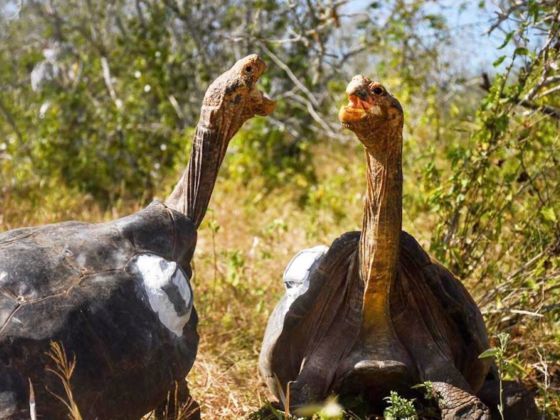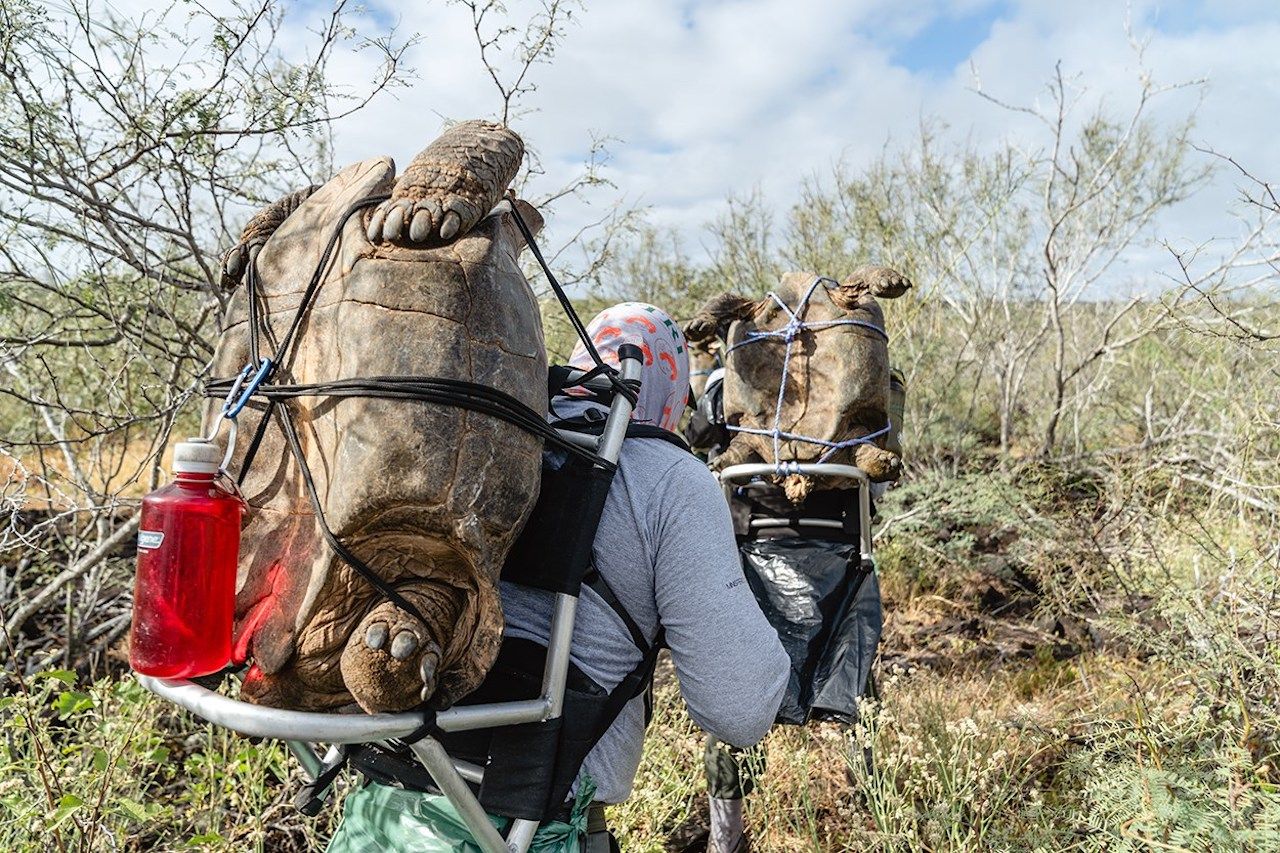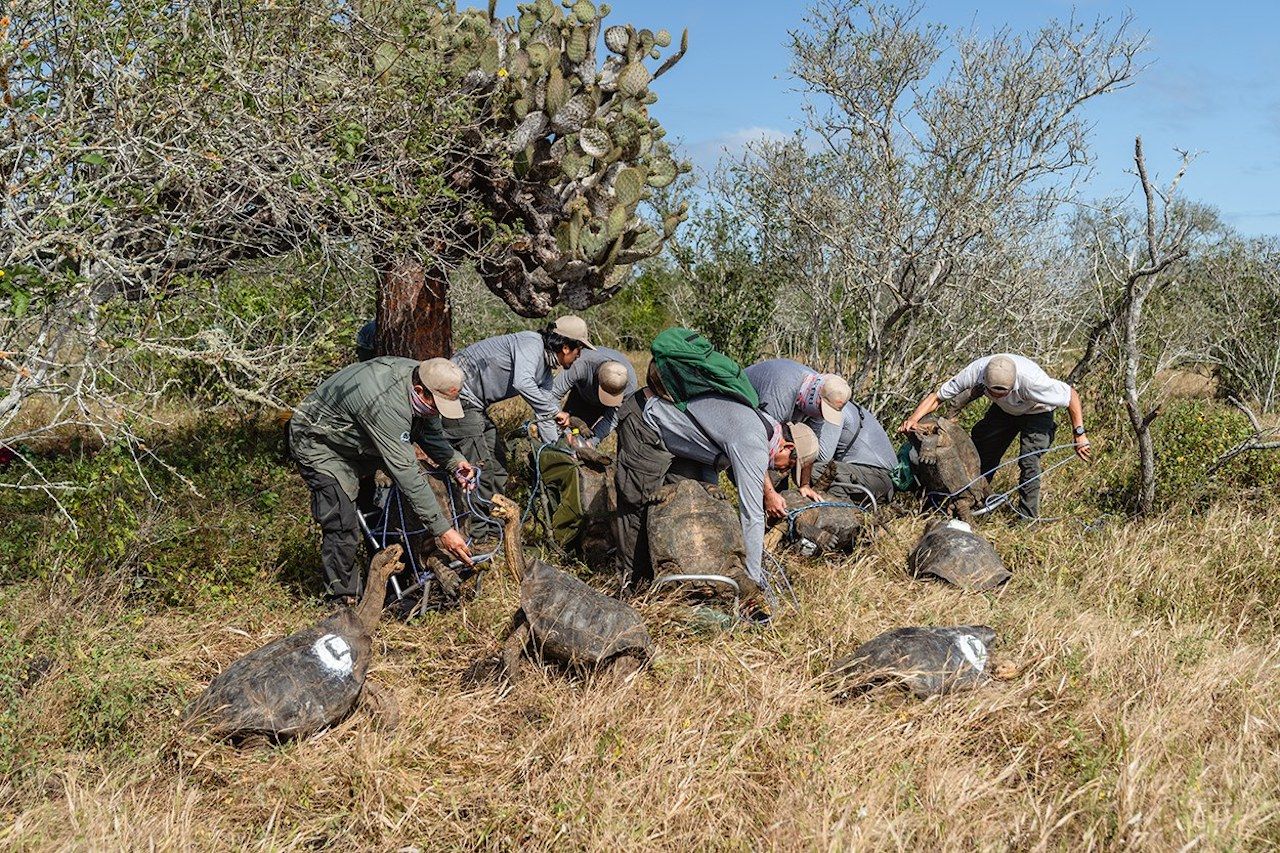Fifty-five years ago, the Giant Tortoise Restoration Initiative gathered all the Española tortoises from Española island in the Galapagos — 12 female and two males — as well as one male kept in the San Diego Zoo, with the hopes that these individuals, the last of their species, would breed and help bring back the Española tortoises from the brink of extinction.


15 Galapagos Tortoises Finally Return Home After Saving Their Entire Species
The captive breeding program, praised as one of the most successful in the world, ended in June, and the tortoises have been brought back to their home turf for a much-deserved rest.
From when the program started in the 1960s until this past June, the initiative has been able to reintroduce 1,900 tortoises to their island of origins, where they have thrived and bred naturally. Today, there are more than 2,300 Española tortoises on Española island.
During their reintroduction into the wild, the tortoises were brought from Santa Cruz Island to Española by boat, then carried 1.5 miles inland to Las Tunas, which is believed to be the area most suitable for their survival as it is where the largest number of Opuntia cacti, the primary food for tortoises, is concentrated.

Photo: Andrés Cruz + Giant Tortoise Restoration Initiative/Facebook
Danny Rueda, director of the Galapagos National Park, said in a press release, “The 12 females, weighing an average of 77 lbs, were carried by a single person, while for the 3 males whose weight exceeded 120 lbs, two people were needed in relays. After the release, the staff remained for approximately four more hours, making observations of the behavior of the tortoises as they settled back into their home.”

Photo: Andrés Cruz + Giant Tortoise Restoration Initiative/Facebook
In six months, scientists from the Giant Tortoise Restoration Initiative will monitor the tortoises in person, but for now, they are being closely surveilled thanks to the GPS satellite devices fitted in each turtle and motion-triggered cameras set up in the area.